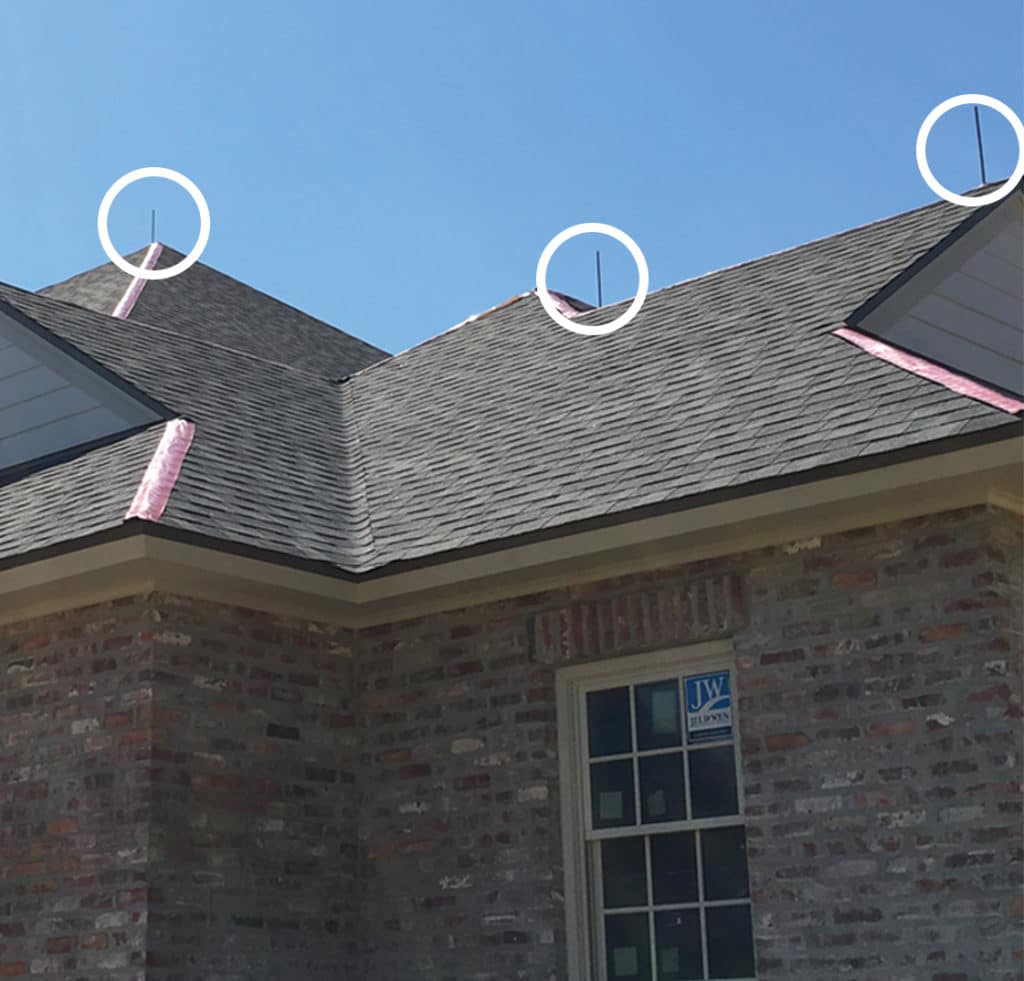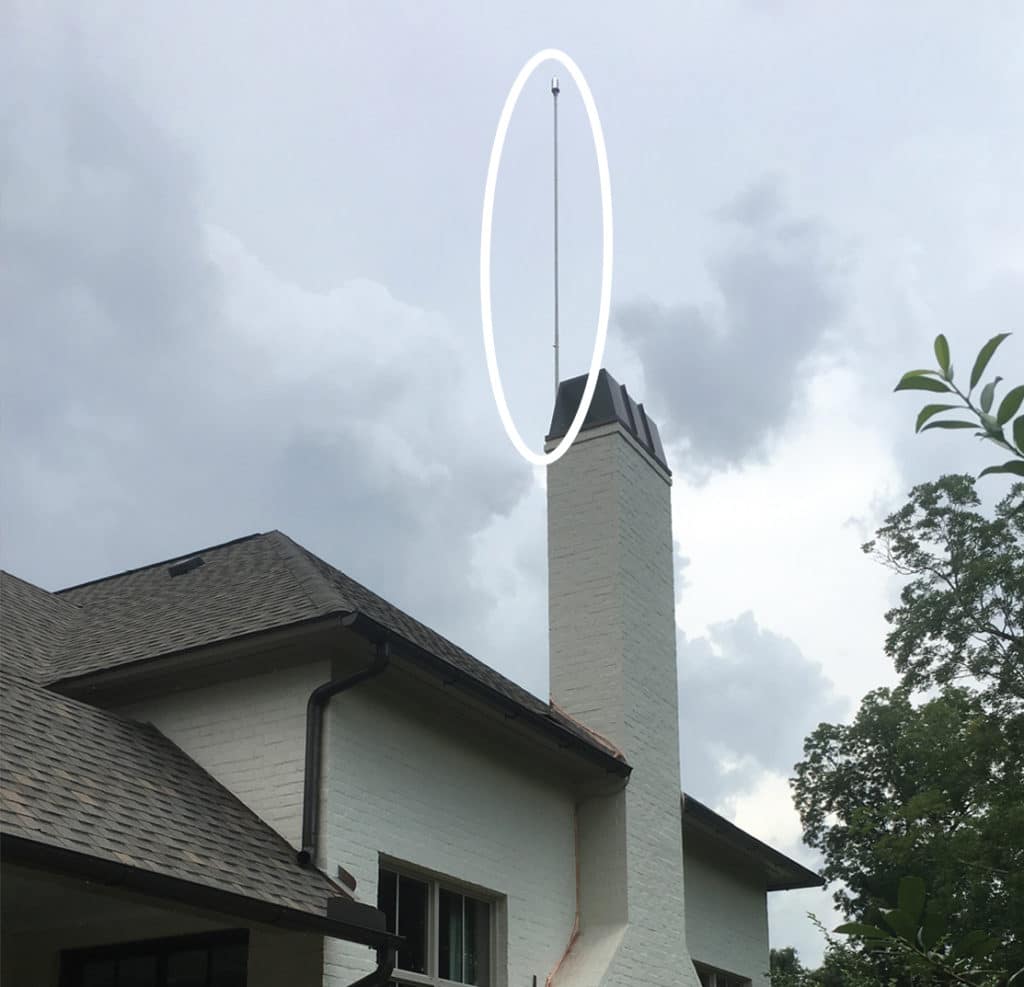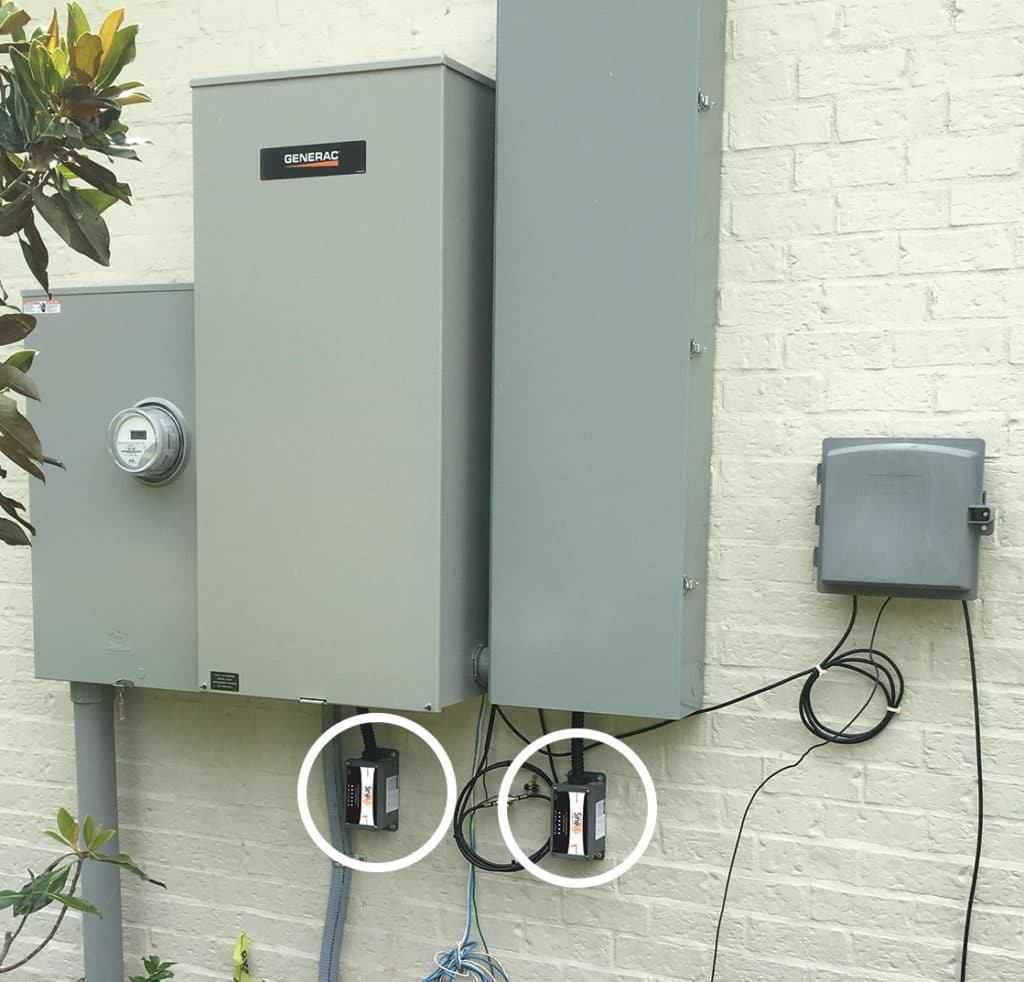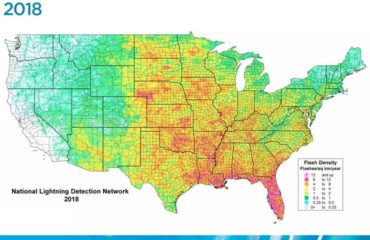Every year thousands of homes are damaged by lightning strikes in the US. That damage can range from a total loss from a fire or losing all your electronics due to electrical surge. Regardless of the scenario, leaving your home unprotected can be a dangerous and expensive risk. You may be interested in learning more about lightning protection systems, but may not be sure about where to start and what to expect. We’re here to help! Below we’ve outlined the integral parts of every residential lightning protection system.
Air Terminals

Air terminals, also known as traditional lightning rods, are the most commonly installed lightning protection system. The system consists of multiple small terminals/rods installed across a home’s roofline. The main goal of the system is to provide lightning a clear path to ground. Don’t love the look of the terminals on your roof? Decorative terminals and cosmetic solutions are available!
ESE System

The Early Streamer Emission system is an alternate option to traditional air terminals and consists of a single, larger rod. ESEs constantly monitor the surrounding voltage in the air and send out upward streamers (the branch of lightning that rises from the ground to the cloud) to meet any downward leaders (the branch of lightning that extends from the cloud). Charges are captured and directed away from vulnerable points to ground. An ESE system is idea for large structures or in open areas.
Grounding
Lightning protection grounding systems in residential structures dissipate the electrical current from lightning that travels through the downconductors after a strike is captured by a lightning rod or other type of air terminal. Grounding systems can also disperse electrical surges caused by power-switching transients. Like the connections between air terminals, downconductors and grounding systems, the components within a grounding system must be properly bonded. Any existing conductive equipment on-site must also be bonded to the grounding system to prevent hazardous voltages in the event of a lightning strike or power-switching transient.
Surge Protection

You’ve invested in state of the art electronics, now it’s time to protect them! Surge protection shields those electronics from sudden rises in voltage. These devices absorb and redirect the electrical energy that come in from nearby strikes. Although it’s not always recommended, surge protection devices can operate independently from full physical lightning protection systems.






